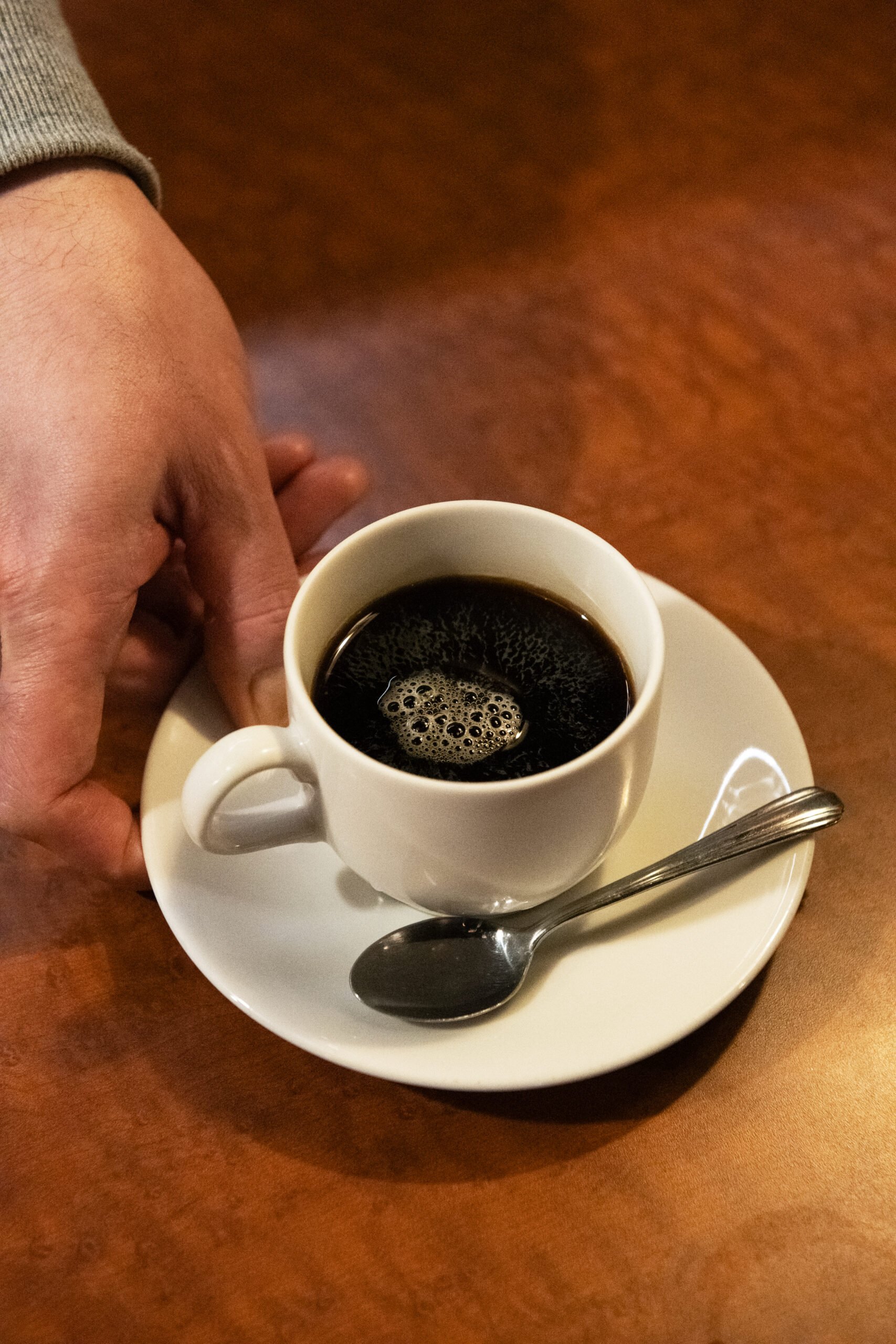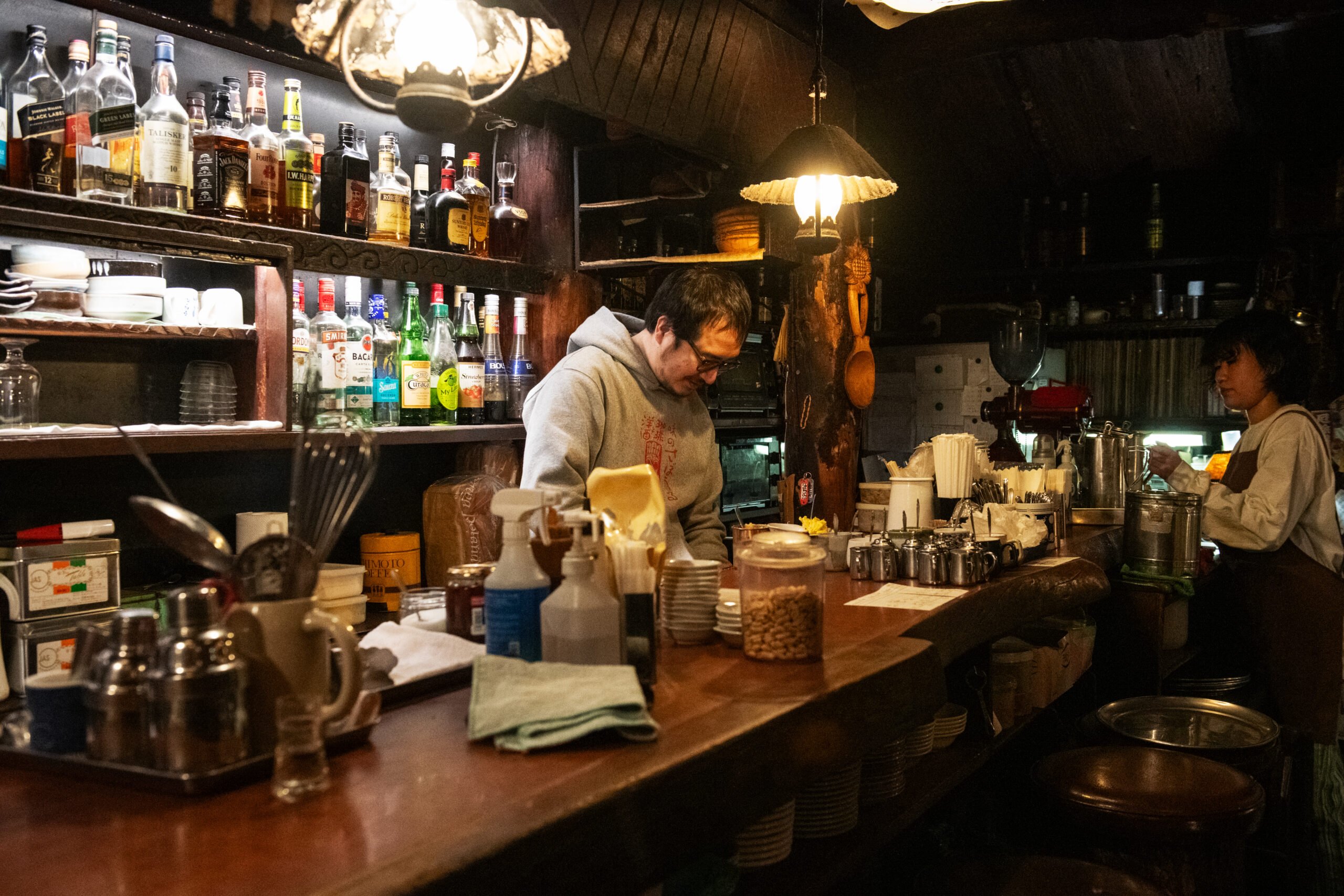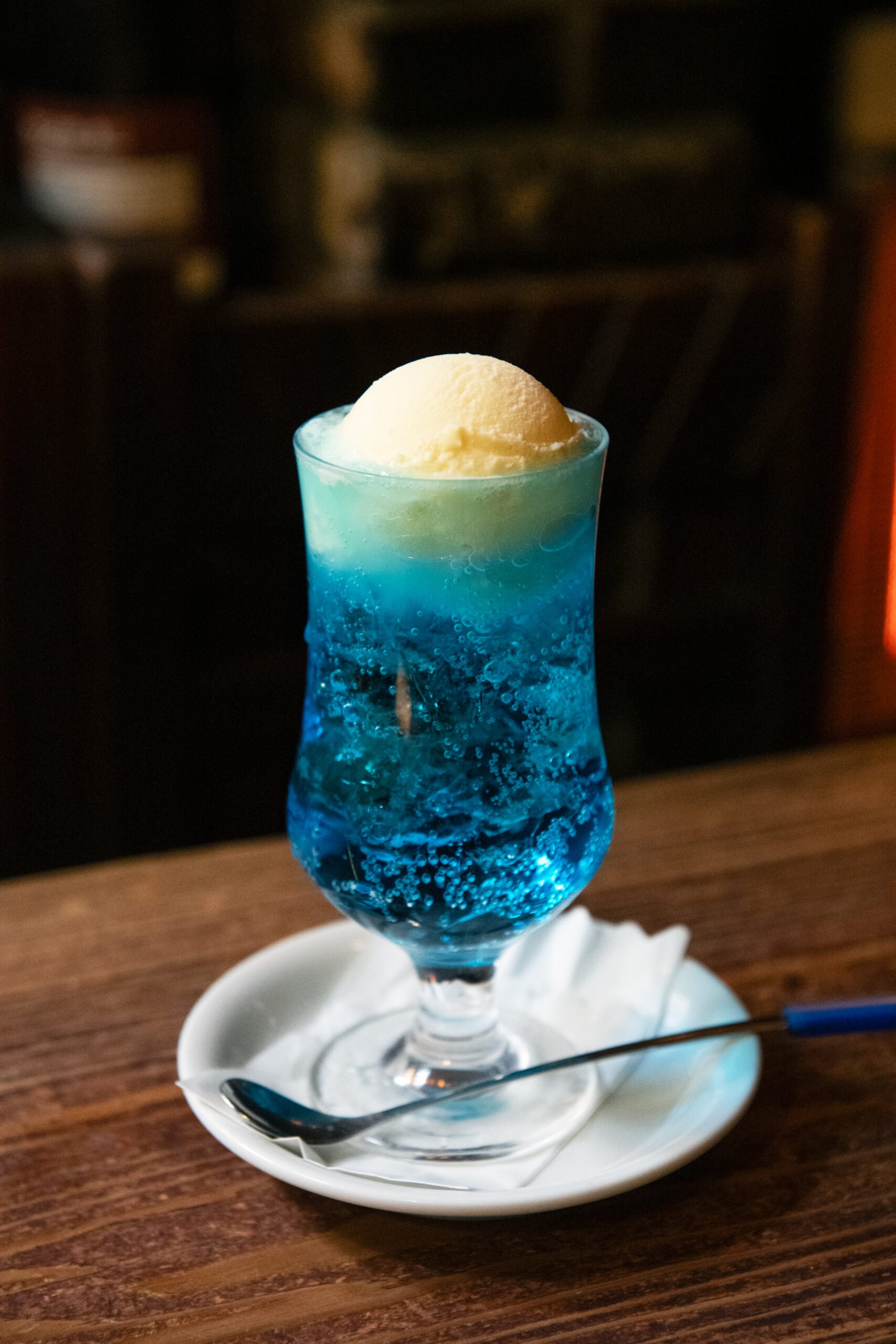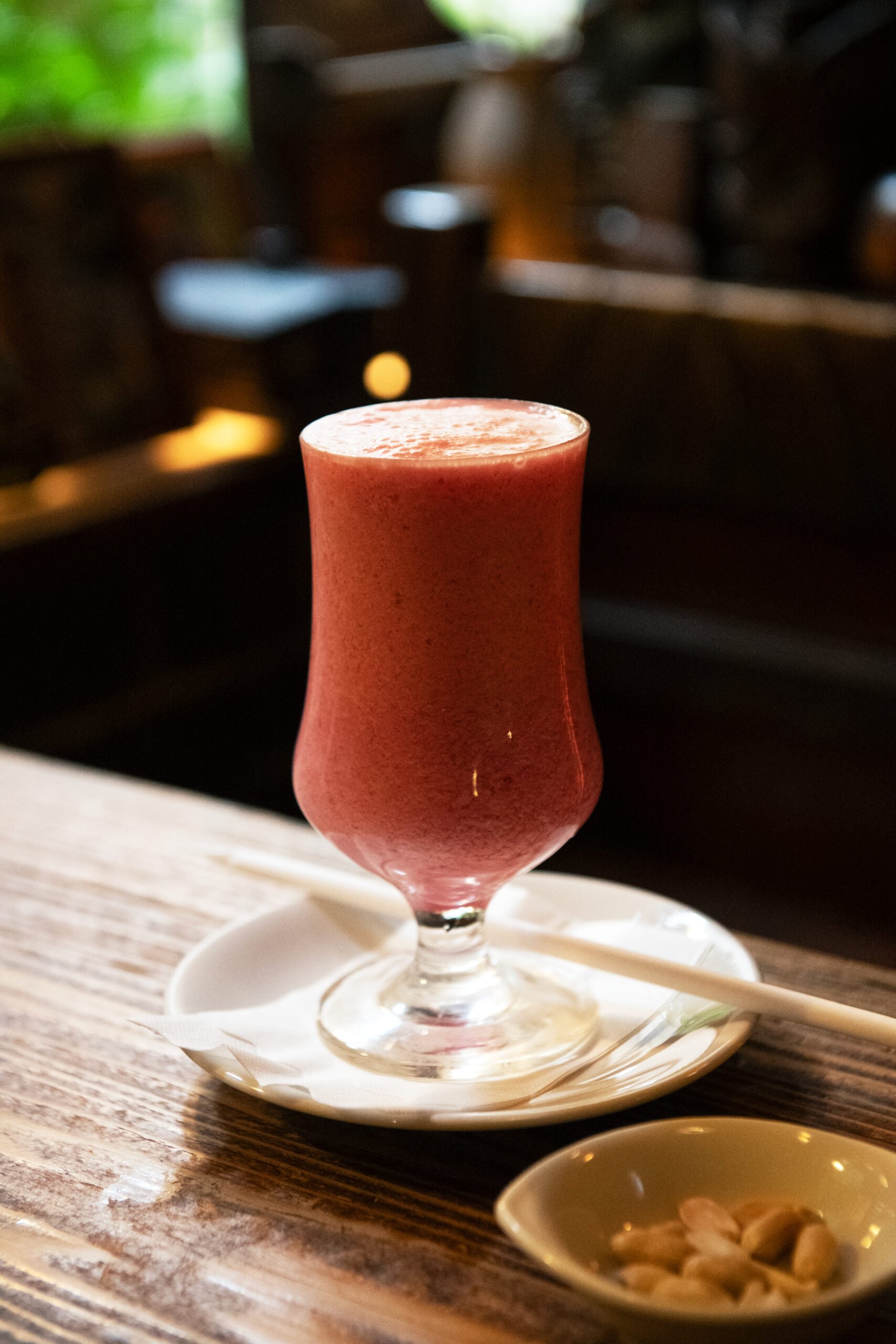CATEGORY
AREA
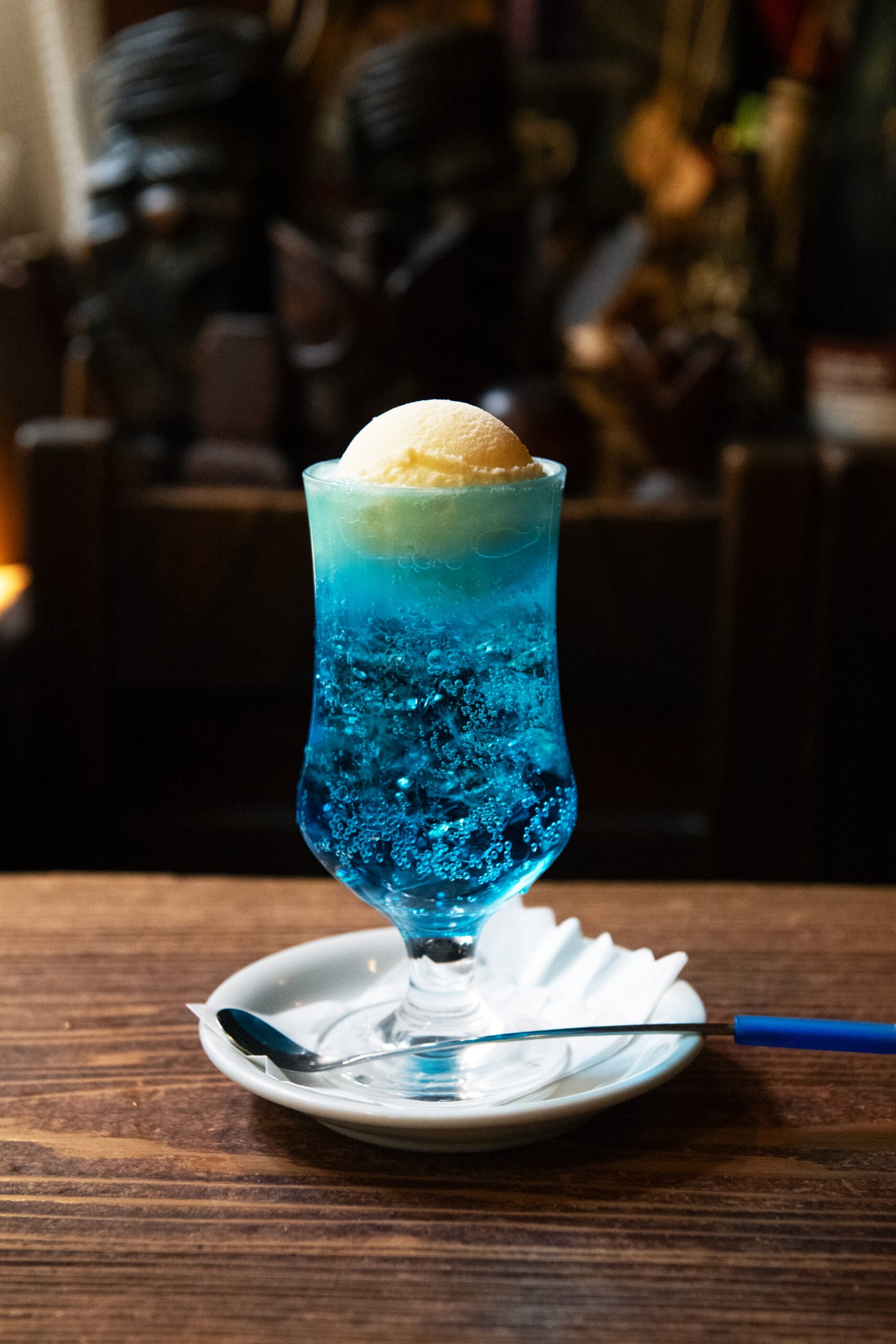
2025.03.17
Japan has a unique café culture known as kissaten. A kissaten is a traditional coffee shop that serves coffee, tea, light meals, and sweets. Unlike self-service cafés, the drinks and dishes you order are brought to your table by the owner or staff, allowing you to relax and enjoy the serene atmosphere. While self-service cafés have become more prevalent since the post-war period, traditional kissaten have remained cherished as places that preserve the nostalgic charm of "old Japan."Tokyo’s Jinbocho district is home to many kissaten, and among them, Sabour is said to be the oldest. We visited Sabour to explore the charm of kissaten and experience its unique appeal firsthand.
One of the key factors that brought Japan's kissaten culture into the international spotlight was the rise of the "Third Wave Coffee" movement in the 2000s. In particular, James Freeman, the founder of Blue Bottle Coffee, significantly influenced this trend by expressing his deep admiration for Japanese kissaten.
There are many aspects that make kissaten so special. For instance, despite being full-service establishments where customers remain seated from ordering to payment, tipping is not customary. Many kissaten are independently owned, which allows for flexible, personalized service rather than rigidly standardized customer interactions. Additionally, each cup of coffee is carefully brewed to order, demonstrating a level of craftsmanship and attention to detail that sets kissaten apart. These elements come together to create an atmosphere that conveys a warmth beyond mere business transactions.
Technological advancements have enabled machines to brew excellent coffee. However, when we asked a kissaten owner, "What goes through your mind when brewing coffee every day?" the response was simple yet profound:"I just hope the customer enjoys it and finds it delicious." This answer reflects a fundamental philosophy—one rooted in the idea of creating something with care for another person.
Another defining feature of kissaten is their unique interior design. Each shop reflects the personality and aesthetic sense of its owner, making the space feel almost like stepping into someone's personal living room. The affordability of the menu, the ease of enjoying light meals, and even casual conversations with the owner—all of these contribute to the distinctive charm of kissaten.
A kissaten is a place where the owner's personality, dreams, and unique tastes are reflected in every detail. This is especially true for independently owned establishments, where the individuality of the owner is deeply embedded. The interior designs of kissaten can generally be categorized into six types: "Classic," "Gorgeous," "Modern," "Spacey," "Fantasy," and "Homey." Among these, when it comes to the "Classic" style, the "mountain lodge-style" immediately brings to mind Sabour in Jinbocho for many people.
Now recognized as one of the most famous kissaten in Jinbocho, Sabour was founded by Master Fumio Suzuki, who sadly passed away in 2021. However, thanks to the dedication of Masashi Ito and his wife, Chie—who have supported the café for many years and inherited Suzuki’s vision—the beloved establishment continues to serve as a cherished retreat for visitors.
Masashi, a passionate music enthusiast, first started working at Sabour in 2006 after hearing one of his favorite musicians praise the café’s Napolitan pasta. A few years later, he married Chie, who was also working at the café at the time, marking his transition to a full-time employee. Over the years, he has taken on the role of the second-generation owner, carrying on the history and legacy of Sabour.
For both Masashi and Chie, the late Master Suzuki was "someone they spent more time with than even their own parents, like a mentor." The current interior design was created by Suzuki and his business partner, who also designed Coffee House Karasu in Tsudanuma, Chiba Prefecture. The warm and inviting mountain lodge-style interior of the café is characterized by rich brown wooden furnishings and a distinctive multi-level seating layout, featuring a semi-basement, a first floor, and a second floor.
One of the most iconic spots inside Sabour is a special seat by the window, where Master Suzuki often sat in his later years. The window is naturally veiled by greenery that extends up to the second floor, creating a secluded and tranquil space. Around the fireplace—now replaced with an electric heater—is an eclectic collection of souvenirs from around the world, including kokeshi dolls, matryoshka dolls, chochin lanterns, and hyotan gourds, all packed into the cozy space. Chie describes Sabour as "a place that welcomes anything and anyone, though at first, people might find it a bit unusual."
The exterior of the café is equally intriguing. A tall olive tree stands beside the entrance, accompanied by a now-rare red public telephone, casually placed beer barrels, an out-of-season wind chime producing delicate tones, and hozuki (Chinese lantern plants), whose withered form exudes a melancholic charm. Adding to the scene is an imposing totem pole, an unexpected yet captivating presence. Many passersby stop in their tracks, wondering, "What kind of place is this?"Nestled within the narrow alleys of Jinbocho’s historic book district, Sabour seems to exist in its own secret world. The café’s enigmatic atmosphere invites visitors to feel as if they have stumbled upon their own hidden utopia—a place uniquely their own.
At the adjacent sister shop, Sabour 2, long lines form during lunchtime as customers seek out classic kissaten dishes, such as the generously portioned Napolitan pasta, which is large enough to serve two. Meanwhile, at the original Sabour, a recently popular menu item is the "Seven-Color Cream Soda."Originally, the cream soda selection included only four colors: green, red, blue, and yellow. However, Master Suzuki found the idea amusing and decided to add purple and orange, expanding the lineup to six colors. Later, following the publication of the picture book Nanairo no Cream Soda (Ken Ele Books, illustrated by oyasmur), white was introduced, bringing the total to seven colors. With the concept of oshi-iro—a fan’s favorite color associated with their beloved idol or character—becoming more mainstream, many customers now choose their drink based on the color that represents their favorite performer or character.
One of the great appeals of kissaten is the freedom to choose a meal at any time of the day—morning, noon, or night—based on one’s hunger level and budget. More than just a place to eat, a kissaten is like a "second living room"—a space where, for the price of a single cup of coffee, one can temporarily escape and spend time however they please. The people who happen to be there at the same time may exchange casual greetings, or they may remain strangers who never cross paths again. These fleeting interactions feel as delicate and ephemeral as the swirling patterns that form when a drop of milk is stirred into the surface of a cup of coffee.
Another popular menu item is the rich and flavorful strawberry juice, which fully captures the essence of fresh fruit.
"As long as customers don’t disturb others, they are free to spend their time however they like," says Chie. However, the way people spend their time in kissaten has changed dramatically with the rise of smartphones. Before mobile phones became widespread, meeting up with someone wasn’t always easy, and communication was largely done face-to-face. People visited kissaten for various reasons—reading newspapers and magazines, passing the time with a cigarette, conducting business meetings, or simply chatting with friends.
Today, with everything accessible through a smartphone, there is rarely a moment of idle time. Even when two people visit together and sit across from each other, they are often absorbed in their screens, barely interacting. While this shift is a natural part of societal progress, it does bring a touch of sadness. In the past, it wasn’t uncommon for unique and outspoken shop owners to gently scold customers for such behavior, but as times have changed, so too has the dynamic between kissaten owners and their patrons.
A kissaten is more than just a café—it serves as a "window into the city," reflecting the daily life and culture of its country. For the owners, it is not merely a place of business but a space that embodies their very lives. It is precisely because of this that visitors should respect the unspoken rules of each establishment, ensuring that every guest can enjoy their time in a warm and welcoming environment.
Second-generation director of the Tokyo Kissaten Research Institute. Fascinated by the lingering influence of the Showa era, she came to see kissaten—cultural landmarks in their own right—as ever-changing personal sanctuaries, akin to having a different "room of one’s own" each day. She spends her time visiting kissaten and sharing their charm with others. To date, she has published 13 books on the subject of kissaten.
Instagram: https://www.instagram.com/retrokissa2017/

